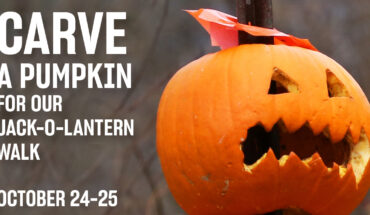A Letter from Amanda Keenan
Mystic Seaport Museum, Advancement Department
Shortly before the quarantine began I started getting emails about sewing masks. I don’t sew as part of my job now at Mystic Seaport Museum since I work in the Advancement Department, also known as fundraising. However, when I started 12 years ago I worked pretty much anywhere there was work to be had. I blacksmithed, climbed rigging for sail handling demonstrations, led overnight programs aboard the Joseph Conrad, and sewed projects for the Museum’s Period Costume shop. This is home to all the beautiful ensembles you see on the 1876 role-players and Lantern Light Tour actors. I can’t take credit for any of these outfits, but I have mended them and learned a lot!
In my current role I work closely with a special group of volunteers called the PILOTS. For one weekend in May and October approximately 100 PILOTS come to Mystic Seaport Museum to work on projects across the grounds. A small group work in the costume shop and work on projects like making pinafores for Summer Day Camps or hand sew curtains for the Buckingham-Hall House. These volunteers are avid quilters and sewers in their own right. So, when I needed someone to find the best mask pattern, I had the perfect friends to help me out. There are a variety of patterns and each one called for different specifications: using all cotton, using flannel on one side, nose pinching metal pieces, and pockets for filters. Most of the PILOTS, volunteers, and staff I chatted with are sewing two pieces of rectangular fabric with elastic or string ties and three tucks on each side. I made a template to speed up the process of lining up folds, but even then some of my carefully placed pleats are “creative”.
I personally have sewed at least 50 masks. The first few dozen went to Backus Hospital in Norwich, CT. I thought I was keeping pretty good track of my overall total, but after the Governor required masks to be worn in public I got sudden requests from family and friends. The same happened to the other sewers. Why? Because for many of us, we’re the one in our families with a sewing machine. I am grateful that my Brother machine has held out alright and only broken a few needles, because my back-up machine is a 1955 Singer Featherweight (previously owned by Claire who you will hear about later). Like everyone, I dug through my carefully curated fabric stash to find appropriate designs for each niece, nephew, neighbor, friend, etc. Thankfully, most of the nephews still like Spiderman and one supports the Yankees, so I had enough to cover everyone! I am sad to report that I’m out of Wonder Woman fabric.
After I started posting about my mask making I connected with healthcare workers on the frontlines. Hilary Bogert McKown and her husband are PILOTS living in New York City where she works as a Speech Pathologist at Mount Sinai Morningside on the Upper West Side of Manhattan. She works tirelessly evaluating and assisting patients to help them begin eating and drinking again after being on a ventilator or pre-ventilator (those on tubes and masks). I originally called her to tell her PILOTS spring weekend was cancelled, but after I found out about her job I asked her about mask patterns and what she needed. She confirmed that the pattern I use is widely accepted and asked me to make her a few. I happily obliged and since we are both sailors I used my beloved fabric featuring sailboats and the phrase “a calm sea never made a skilled sailor”.
Meanwhile, Carrie Tucker, a college friend of mine who works in Gainesville, FL as a CT/X-Ray Technologist showed off her new required hospital gear while in a group chat. This included face shields, surgical caps, and a large smock. She told me that they had the appropriate masks, but could I make a surgical cap? Her standard issue one was uncomfortable to wear all day. Honestly, I had no idea how to make one, but that is the beauty of the internet. YouTuber and surgical resident Lea Goes Green provided an excellent tutorial and recently issued a printable pattern to make surgical caps. After some tweaking I’ve made 3: two for Carrie and one for Hilary. Carrie’s featured glow-in-the-dark skull and bones and Hilary’s have dogs in boats.
Although their Spring Weekend was cancelled, PILOTS Wendy Frisch, Julie Doering, Michele Delmhorst, and Annie Taylor are all doing their part with their fabric stashes and sewing machines. Michele sewed at least 50 masks for local hospitals and those in need and provided other local sewers, like Julie, with materials to make more. Currently Michele is working with the owner of Zack’s Bar & Grille in Stonington Borough to make masks for employees for when the restaurant re-opens. She’s ingeniously deconstructing old work shirts so the pinstripe pattern will match their uniform and there is no wasted material.
When the Museum temporarily shut down operations in March, Julie Doering knew that there were still some employees that needed protection from the Coronavirus. Julie, who is a member of the President’s Advisory Council, a PILOT, and frequent volunteer, jumped in to provide masks for Mystic Seaport Museum staff. Julie made over 40 masks for the membership, advancement, security, and shipyard staff who continued to patrol the grounds, check on boats, and process donations and memberships. We are incredibly grateful for her beautifully made masks.
Out on Fishers Island, Museum volunteer Laura Edwards has been diving into her quilting fabric stash to provide colorful masks for family and friends. Because of her quilting hobby she is using bold fabric choices, such as Halloween or bright floral prints. She wins for sending masks the farthest as she mailed some to her granddaughter and her husband out in Guam. He is in the Navy, so Laura told me she had to make him a mask that was just black and blue to match his uniform. This didn’t stop her from also including masks in their care package that had dragonfly fabric.
When Claire Calabretta, Associate Director – Foundation and Government Grants, is not at the Museum she sews and is a master gardener. I talked to her this week and she explained that her dining room has been ground zero for both activities ever since the quarantine started. Through her church she started by making mask kits: each bag contained enough pre-cut fabric and elastic for 10 masks. She provided enough to make 70 masks and overall these groups have provided 1,000 masks for the Stonington community. Since then she switched to making masks for friends, family, and donation and had to reallocate her Earth Day seedlings to other members of her gardening group. Thirty to fourty sprouts still take up a small portion of her dining room not devoted to mask making. She, like me, has lost track of exactly how many masks she’s completed, but she thinks it is around 50. When her elastic supply ran out, she got creative and turned to making “yarn” from t-shirts. She actually prefers these ties over the traditional elastic because it’s recycling materials, more comfortable and adjustable.
I am incredibly grateful for the support and camaraderie through the Museum Community. It was wonderful to chat with my fellow sewers and craftspeople even though we are still in isolation. These are just a few examples and I am certain there are plenty of wonderful efforts going on throughout the larger community and our committed friends, members, and volunteers.




